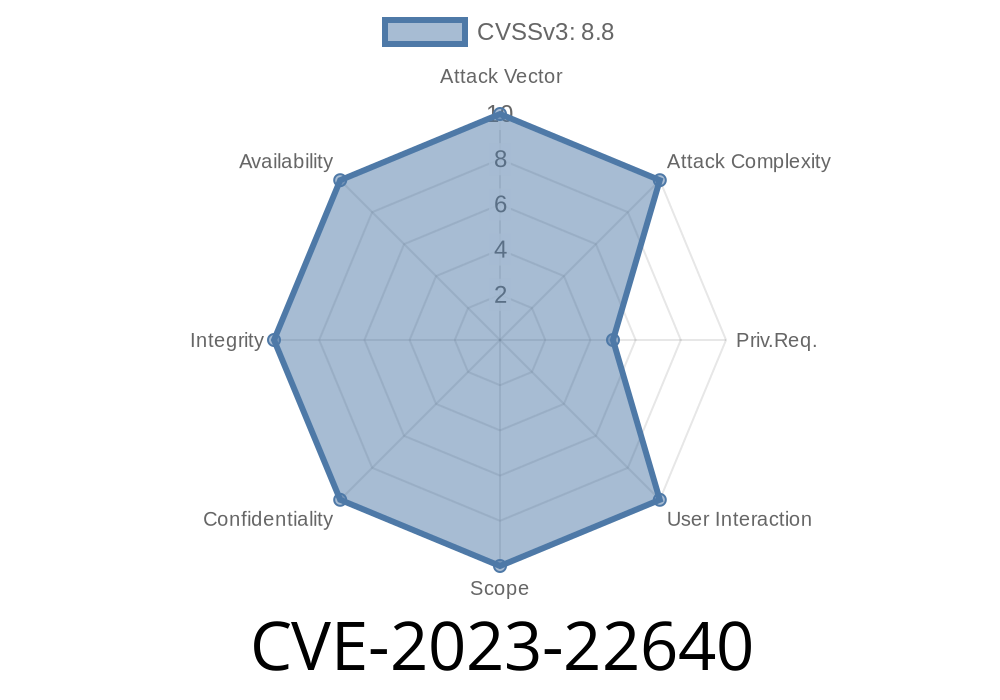A critical out-of-bounds write vulnerability, tracked as CVE-2023-22640, has been discovered in multiple versions of Fortinet FortiOS and FortiProxy software. This flaw allows an authenticated attacker to execute unauthorized code or commands via specifically crafted requests. This blog post dives into the details of this vulnerability, including affected versions, exploit details, and mitigation strategies.
Exploit Details
An authenticated attacker can exploit this vulnerability by sending specifically crafted requests to the vulnerable target. This could lead to the execution of unauthorized code or commands on the affected system. The following is a simplified code snippet showcasing how an attacker might structure their request:
POST /vulnerable_endpoint HTTP/1.1
Host: targethost
User-Agent: Mozilla/5.
Content-Length: [exploit payload size]
Content-Type: application/x-www-form-urlencoded
Connection: close
[exploit payload]
It is crucial to note that the attacker must already be authenticated. This means they need valid login credentials for the targeted Fortinet system. However, even with this limitation, the vulnerability still poses a significant threat to affected installations due to the ability to execute arbitrary code.
Original References
- CVE: CVE-2023-22640
- Fortinet Security Advisory: FG-IR-21-165
Mitigation
Organizations running vulnerable versions of Fortinet FortiOS and FortiProxy are encouraged to apply the appropriate patches provided by Fortinet as soon as possible. The following versions resolve the vulnerability:
FortiProxy version 7..8
In addition to patching, here are some recommended best practices to improve the overall security posture:
Ensure strong, unique passwords are used for all user accounts.
- Regularly review user accounts and remove any unauthorized users or those who no longer require system access.
- Restrict access to the Fortinet management interface to trusted networks and enforce VPN connections for remote access.
Conclusion
The CVE-2023-22640 vulnerability poses a significant risk to organizations running affected versions of Fortinet FortiOS and FortiProxy software. It is essential for affected organizations to review their systems and promptly apply the recommended patches. Implementing the additional security best practices highlighted in this blog post can further strengthen the overall security posture, reducing the likelihood of exploitation.
Timeline
Published on: 05/03/2023 22:15:00 UTC
Last modified on: 05/10/2023 21:10:00 UTC
